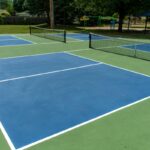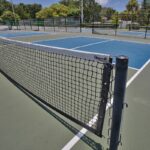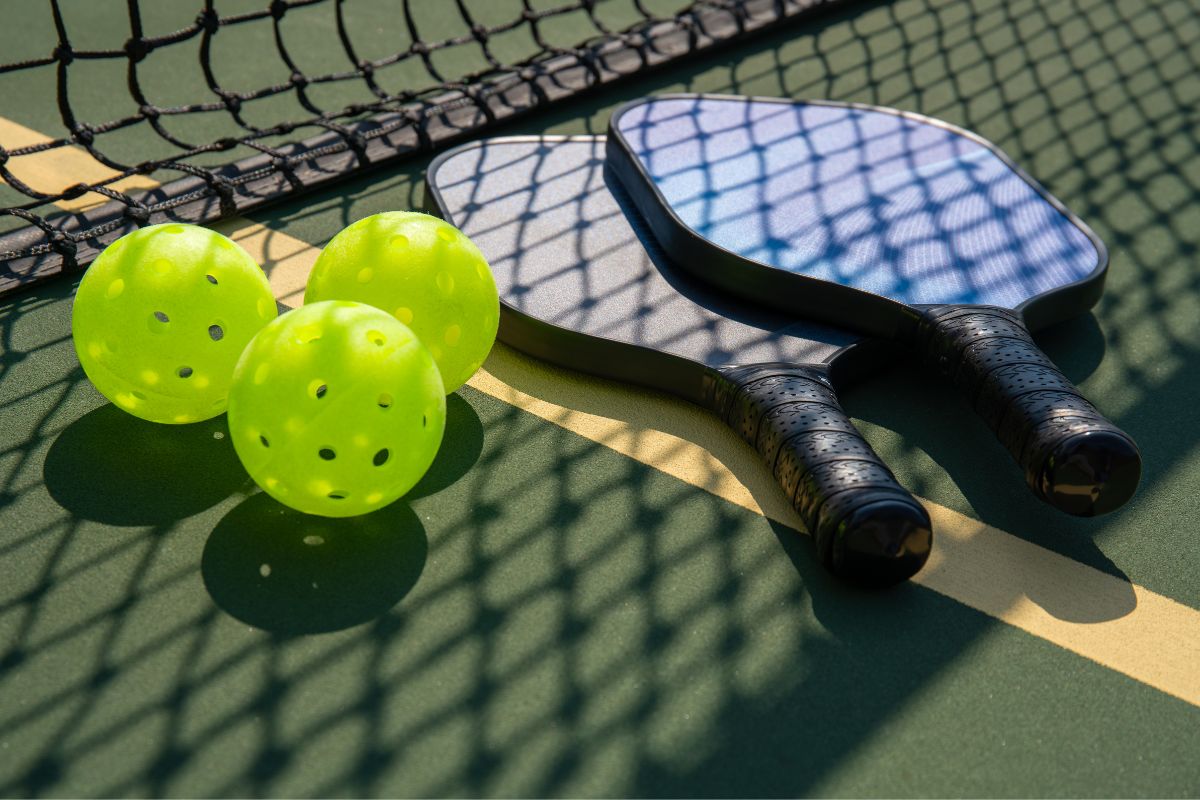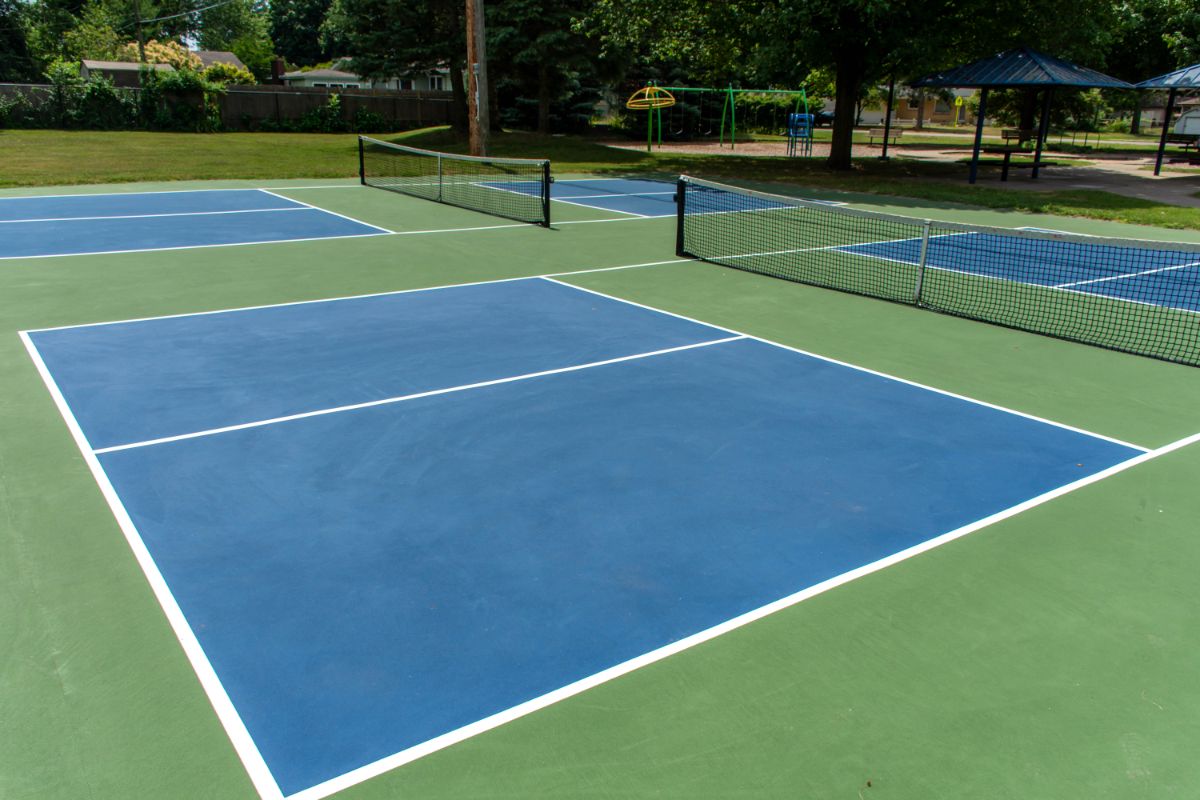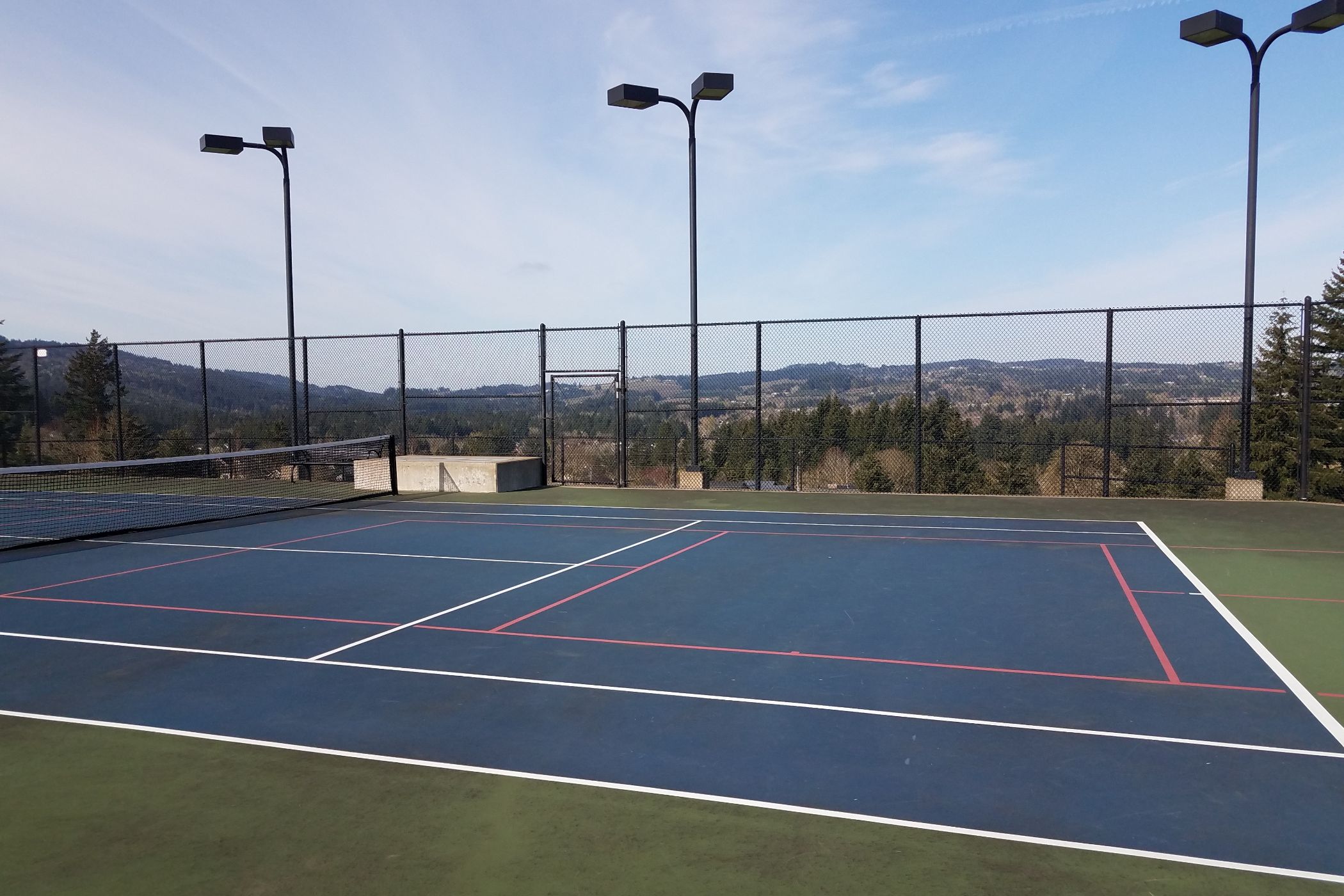While pickleball is a relatively simple game, there are some rules that need to be followed.
As a sport, pickleball is designed to be easily picked up by beginners and be less taxing than some other racket sports. The rules reflect this idea.
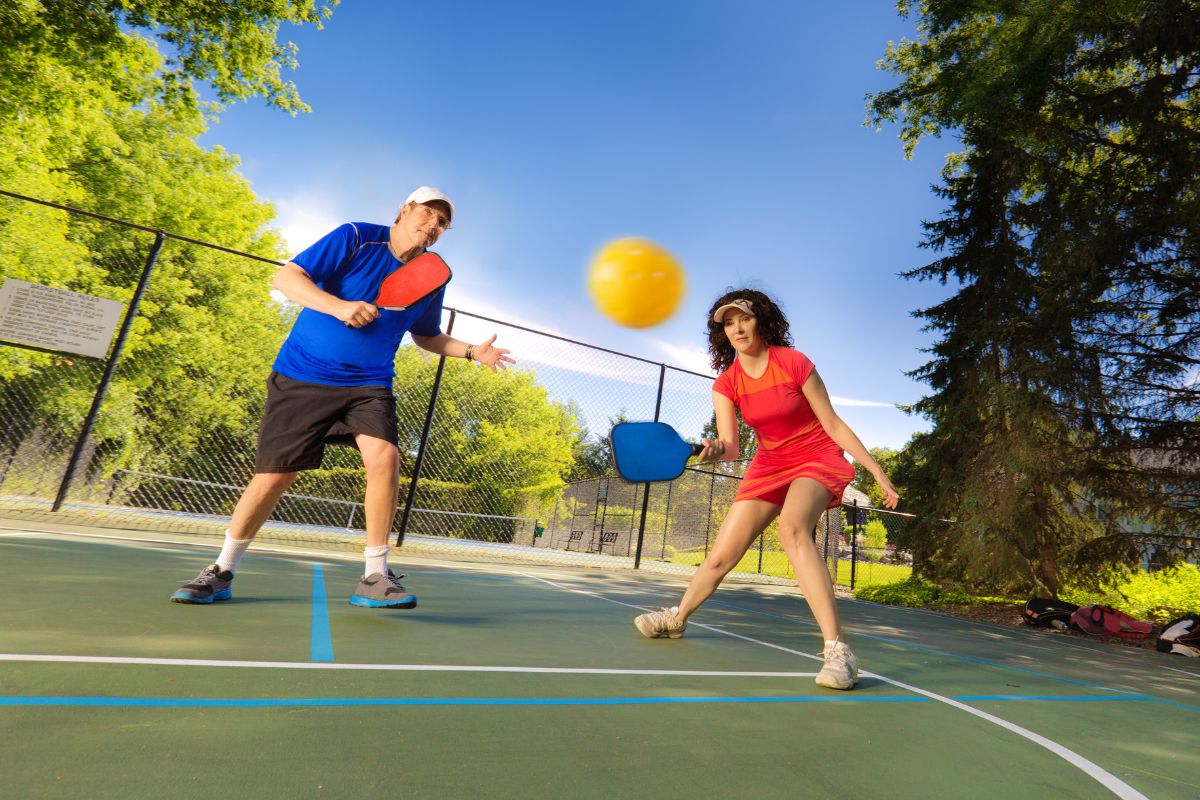
The one rule that makes pickleball stand out amongst other racket sports is the double bounce rule.
It was officially changed in the pickleball rule book in 2018 to the two-bounce rule in order to make it less confusing, but players still call it the double bounce rule.
In this article, we go over exactly what the double bounce rule is and why it is needed in a sport like pickleball.
Basic Rules
Before delving into the double bounce rule, you must first understand the basic rules of pickleball and how serving works.
While pickleball can be played as either singles or doubles, doubles are far more common. Players win by reaching 11 points, but they must win by a lead of at least 2 points.
Who serves is determined by a coin flip at the start of a game and the serving team is the only team who is able to score a point during that rally.
A serve must be done underhand and with below-the-waist contact. The server must have at least one foot behind the baseline when serving and the ball must go diagonally across the court.
Once a point is scored or a fault has taken place, the server side is switched out.
The Double Bounce Rule
This rule is one of the basic rules of pickleball and must be learned by all beginners. In basic terms, the ball must bounce on each side of the court at least once before regular play.
When the ball is served, the receiving team must let it bounce once before hitting it, then the initial serving team must also let the ball bounce once before returning it.
Allowing the ball to bounce before hitting it is called a groundstroke. Once each team has performed one then you are allowed to volley, which is when you hit the ball before it can bounce.
People who have played different racket sports may find this rule to be tedious and frustrating at first. But, you will quickly come to respect this rule and how it completely changes the gameplay.
The double bounce rule is used to extend play and remove the serve-volley advantage.
Instead of being able to immediately hard volley the ball after a serve, you must groundstroke it which gives the receiving team more time to anticipate the ball.
This rule not only removes an unfair advantage to the serving team, but it also helps both teams get into the mindset of an even game at the start of a rally.
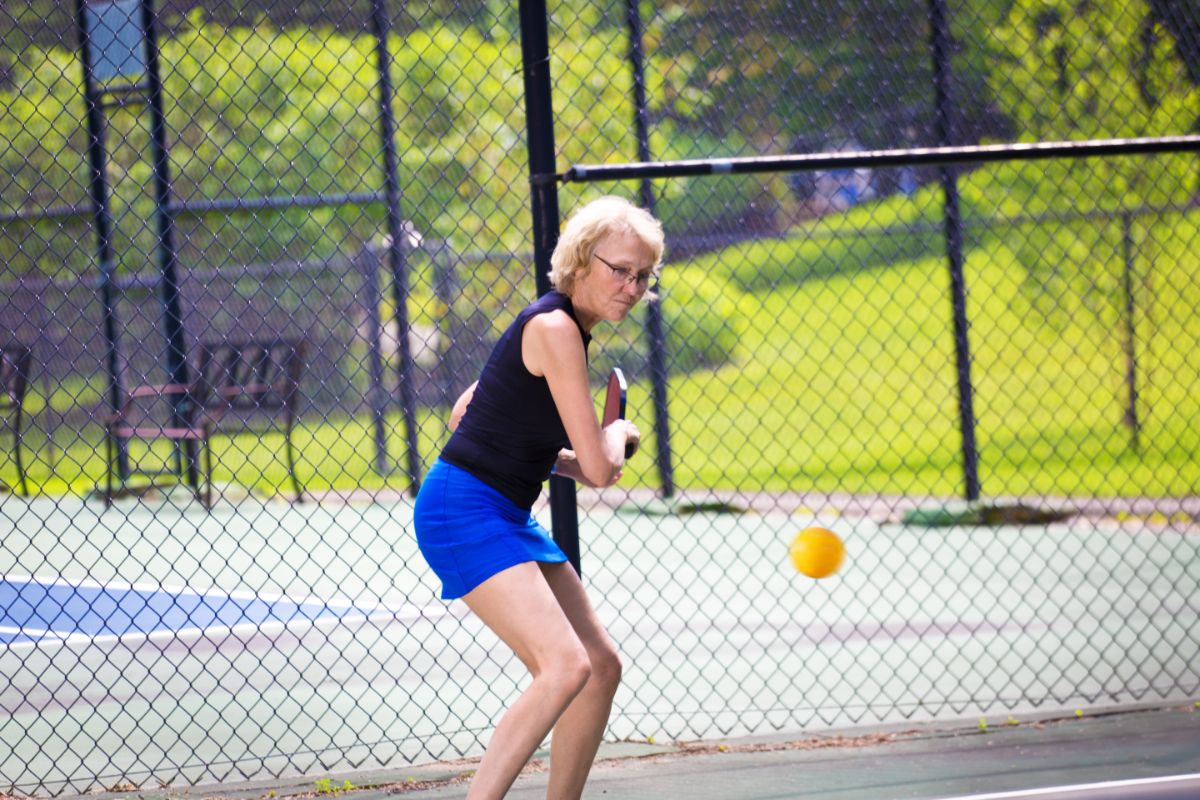
Tips
While it may seem simple, this is a hard rule to pick up at first, especially if you have played other sports.
It is especially harder for the serving team to follow this rule, this is because other racket sports do typically make the receiving team double bounce the ball on their first return.
The best tip to follow this rule is to not advance onto the court immediately. Once you have served, the serving team (both server and serving partner) should stay back on the court.
This should help to remove any natural instincts to hit the ball immediately as you have to let it bounce to reach you on the other end of the court.
Once the second groundstroke has happened then the team can advance onto the court.
When playing with doubles, it is good to think of it as the receiver’s partner is the only person who is allowed to hit the first volley.
This is because by the time it has got to them the ball would be on its fourth short, the initial serve and then the 2 groundstrokes would’ve already happened.
Further Rules
Another rule to be aware of in pickleball is the no volley zone, also commonly called the kitchen.
This is an area that is 7 feet on both sides of the net where the players are not allowed to hit the ball.
Another rule to be aware of is that the ball is allowed to come into contact with any line and is still considered to be in. The only exception to this rule is if it lands on the no volley zone line on a serve.
Faults
In pickleball, a fault results in a point, unless you are the serving team then it results in a loss of serve or a side out where the serve goes to the other team and they now have a chance to score points.
Below are some ways a fault can happen in pickleball.
- If the player steps on no volley zone when volleying. This counts even if it is a player’s momentum that carries them into it after hitting the ball.
- If the ball doesn’t land in the confines of the play.
- If the ball is hit into the net.
- The double bounce rule isn’t followed.
- The ball bounces twice before being hit by the receiver. However, this fault is removed if you are playing wheelchair pickleball.
- If a ball strikes another player.
Final Thoughts
The double bounce rule is one of the ways that pickleball is unique and stands out amongst other racket sports.
Not only does it help to balance the game, but it also creates a sense of good sportsmanship that carries on throughout the match.
While it is competitive, the main goal of pickleball is to have fun. It can be played by everyone, no matter your skill level, and is truly a unifying sport for all ages.
The double bounce rule is just one of the many reasons why this is possible.
- What Kind Of Ball Is Used In Pickleball? - July 13, 2023
- How Much Does It Cost To Build A Pickleball Court? - July 11, 2023
- When Do New Pickleball Rules Take Effect? - July 8, 2023

